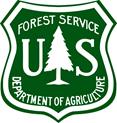Big Barren Creek - Watershed Monitoring
Scope
The U.S. Forest Service is involved in an experiment, known as the Missouri Pine-Oak Woodland Restoration Project: a landscape-scale restoration project that includes the use of prescribed burning as a tool for vegetation recovery. Due to public concerns that prescribed burning is negatively impacting water quality through increased soil erosion while increasing flood frequency due to the removal of leaf litter and ground vegetation cover, the U.S. Forest Service has partnered with OEWRI/MSU to plan and implement studies which assess soil, sediment, channel, and flooding conditions to better understand the effects of forest management on water quality and flooding.
The long-term goal is the creation and implementation of a watershed restoration and improvement project which will include upland vegetation treatment sites and stream or bottomland areas. In addition to addressing the concerns of the public, the study will also evaluate soil conditions and stream stability as associated with long-term watershed improvement projects within two priority watersheds: Big Barren Creek and the headwaters of Big Barren Creek.
Objectives
- Determine soil, water, and sediment impacts of vegetation management practices in comparison to other management practices
- Use geomorphic and GIS assessment methods to evaluate downstream changes in channel form, flood capacity, stability, and substrate with the Big Barren Creek watershed related to: (a) historical land disturbance, (b) contemporary land disturbance, (c) infrastructure such as crossings, channelization, and ad-hoc BMPs, and (d) climate change
Partners
U.S. Forest Service
The Nature Conservancy, Missouri Chapter
Funding
U.S. Forest Service

Reports
2021
- Rainfall Monitoring in the Big Barren Creek Watershed, Mark Twain National Forest, Southeast Missouri, Water Years 2018-2021, by Marc R. Owen, Shoukat Ahmed, Elandé Engelbrecht and Dr. Robert T. Pavlowsky [.pdf]
- Water Temperature Monitoring in the Big Barren Creek Watershed, Mark Twain National Forest, Southeast Missouri, Water Years 2017-2021, by Marc R. Owen, Shoukat Ahmed and Dr. Robert T. Pavlowsky [.pdf]
- Hydrological Monitoring of the Big Barren Creek Watershed, Mark Twain National Forest, Southeast Missouri, by Marc R. Owen, Shoukat Ahmed and Dr. Robert T. Pavlowsky [.pdf]
- Hydrological Monitoring of the Big Barren Creek Watershed, Mark Twain National Forest, Southeast Missouri, Water Year 2021, by Marc R. Owen, Shoukat Ahmed, Elandé Engelbrecht and Dr. Robert T. Pavlowsky [.pdf]
2020
- Hydrological Monitoring of the Big Barren Creek Watershed, Mark Twain National Forest, Southeast Missouri, Water Year 2020, by Marc R. Owen, Shoukat Ahmed and Dr. Robert T. Pavlowsky [.pdf]
- Soil and Vegetation Monitoring to Evaluate Hydrological Effects of Presubscribed Burninig in Big Barren Creek Watershed, Mark Twain National Forest, Southeast Missouri, by Grace Roman, Dr. Robert T. Pavlowsky and Marc R. Owen [.pdf]
2019
- Hydrological Monitoring of the Big Barren Creek Watershed, Mark Twain National Forest, Southeast Missouri, Water Year 2019, by Marc R. Owen, Shoukat Ahmed and Dr. Robert T. Pavlowsky [.pdf]
2018
- Hydrological Monitoring of the Big Barren Creek Watershed, Mark Twain National Forest, Southeast Missouri, Water Year 2018, by Marc R. Owen, Shoukat Ahmed and Dr. Robert T. Pavlowsky [.pdf]
- Stream Crossings Inventory and Evaluation, Upper Big Barren Creek Watershed, Southeast Missouri, by Marc R. Owen, Matthew S. Thies, Kayla M. Geier and Dr. Robert T. Pavlowsky [.pdf]
2017
- Hydrological Monitoring of the Big Barren Creek Watershed, Mark Twain National Forest, Southeast Missouri, Water Year 2017, by Marc R. Owen, Shoukat Ahmed and Dr. Robert T. Pavlowsky [.pdf]
2016
- Hydrological Monitoring of the Big Barren Creek Watershed, Mark Twain National Forest, Southeast Missouri, Water Year 2016, by Marc R. Owen, Shoukat Ahmed and Dr. Robert T. Pavlowsky [.pdf]
- Historical Rainfall Analysis for the Big Barren Creek Watershed, Southeast Missouri (1995-2015), by Dr. Robert T. Pavlowsky, Marc R. Owen and Rachael R. Brady [.pdf]
Theses
2021
- Historical Changes of Channel Width in a Headwater Stream System, Mark Twain National Forest, Missouri, by Sierra N. Casagrand [.pdf]
- Long-Term Hydrological Impacts of Historical Logging on Recent Hydro-Geomorphic Conditions, Big Barren Creek Watershed, Mark Twain National Forest, by Shoukat Ahmed [.pdf]
2019
- Geomorphic and Land Use Controls on Headwater Channel Morphology in Mark Twain National Forest, by Grace F. Roman [.pdf]
- Historical Land Use Influence on Fine-Grained Sedimentation in Channel and Floodplain Deposits in a Forested Missouri Ozark Watershed, by Katy Nicole Reminga [.pdf]
- Step-Pool Channel Morphology, Forcing Effects, and Geomorphic Classification in the Ozark Highlands, SE Missouri, by Triston Ralland Rice [.pdf]
2017
- Geomorphic Characteristics and Sediment Transport in Natural and Channelized Reaches of Big Barren Creek, Southeast Missouri, by Matthew S. Thies [.pdf]
- Geomorphic Disturbance and Anthropogenic Modifications in Big Barren Creek, Mark Twain National Forest, Southeast Missouri, by Rachel A. Bradley [.pdf]
- Geomorphic Effects of Logging Railbeds on an Ozarks Headwater Stream, Mark Twain National Forest, Missouri, by Nickolas S. Bradley [.pdf]
- Influence of Prescribed Burning on Upland Soil Properties in Mark Twain National Forest, Southeast Missouri Ozarks, by Megan Lynn Hente [.pdf]